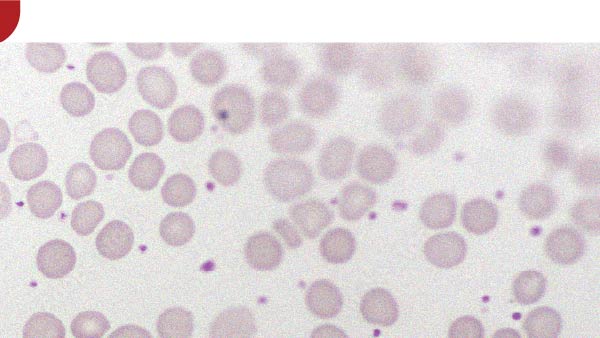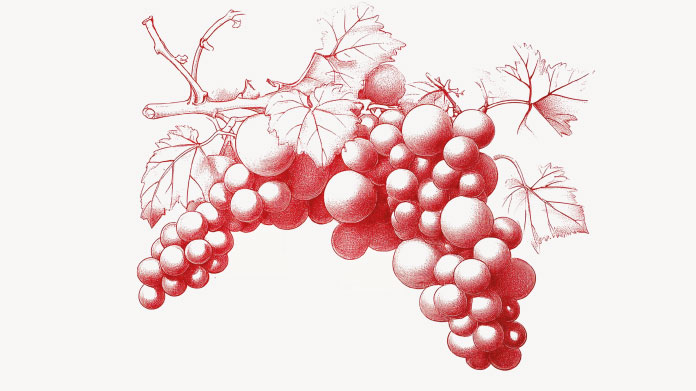Heavy legs: 7 natural and effective remedies
If your day-to-day activities are constrained by the discomfort of heavy legs, here are some simple, natural tips that can help you rediscover the feeling that you’re ‘walking on air’!

Recap: why do I have heavy legs?
Heaviness in the lower limbs, swollen ankles, tingling or restless legs: all these symptoms generally indicate poor circulation, or more specifically chronic venous insufficiency. This means that superficial veins in the legs just under the skin are struggling to transport blood from the legs back up to the heart.
So what’s actually going on? Our veins are equipped with valve-like structures, which close to prevent the backward flow of blood into the veins. If these valves become too distended, they lose their ability to be ‘leak-proof’, causing blood to pool in the legs and ankles, and producing an unpleasant heavy sensation.
Prolonged standing or sitting, hormone fluctuations, heredity, smoking, wearing tight clothing and heat are the main factors that predispose to heavy legs (1). The good news is there are a number of steps you can take to reduce this uncomfortable sensation.
Regularly massage your legs
The best way to get your circulation moving again is to massage your legs at the end of the day (2). Use gentle movements moving from the ankles up towards the calves.
Try to add in this extra little step: lie down on the floor placing your legs vertically against a wall. Hold this position for at least 5 minutes, while taking deep, slow breaths.
Avoid these measures, however, if you suffer from phlebitis, painful varicose veins or wounds. The same applies if your legs are abnormally warm and swollen, in which case you should consult your doctor.
Take appropriate exercise
A sedentary lifestyle is to be avoided in the case of heavy legs. Moving regularly engages the calf muscles, which have a natural restraining effect on vein walls (3).
But this doesn’t mean traumatising your legs with high impact activities: avoid jogging, tennis and skipping, all of which weaken the valves in veins. Instead, focus on walking, cycling or aqua-biking – an excellent choice given the ‘draining’ effect of water!
Horse chestnut, a first-rate venotonic
Though they look very similar, horse chestnut (Aesculus hippocastanum) should not be confused with common chestnut .
Encased in a prickly burr, the fruit of the horse chestnut is good for vein heath, and by extension, preventing heavy legs, due to its high content in aescin (4).
So try to choose a horse chestnut supplement with a sufficiently high level of this molecule (such as the venotonic Horse Chestnut, standardised to 20% aescin compared with 3%-6% in standard supplements).
Take an invigorating shower to get your circulation moving
Not a fan of the ‘Scottish shower’? Well there’s no need to plunge your entire body into freezing cold water. Through a clever play of contraction and dilation, showering your legs with alternating hot and cold water is enough to invigorate the network of veins and reactivate the circulation (5).
To fully benefit from this, finish your shower with a jet of cold water moving from the bottom of the legs to the top. Be brave!
Sweet clover for maintaining leg comfort
Adorning our fields and embankments, sweet clover (Melilotus officinalis) is also good for the legs as it plays a role in vein and blood vessel health (6-7). Harvested in summer, the plant’s flowering tops, gathered in yellow clusters, owe their impressive properties to the flavonoids and coumarin derivatives they contain.
That’s why some people choose to take a sweet clover supplement (such as the natural product Lymphatonic standardised to 18% coumarins) to restore some lightness.
Avoid heat sources that are too intense
It’s hard to prevent swollen legs in summer given that in hot weather, veins tend to dilate excessively and are less effective at transporting blood higher up the body.
Does that mean no more sunbathing at the beach? Don’t worry. Just try to spend some time in the shade so as not to expose your legs to the sun for prolonged periods. And avoid steam baths, saunas and hot waxing treatments as they will only exacerbate the problem.
Maritime pine bark for vascular health
First mentioned in the writings of explorer Jacques Cartier, maritime pine bark, taken as a simple infusion, is thought to have helped his entire crew recover their strength and vitality. However, it was only in the 1950s, some 400 years later, that the mystery of this tree was conclusively revealed.
Its secret? An extraordinary molecule contained in the bark, which had never before been isolated, and which today remains of huge interest to the scientific community: pycnogenol (8-9).
So maritime pine bark is up there with the best when it comes to our lower limbs. With a role in vascular health, it naturally helps to maintain the comfort of our legs. It’s therefore well worth supplementing with this plant extract of choice (for example, with the product Pycnogenol , a powerful, patented extract made from French Landes pine trees).
References
- Dogra S, Wolf M, Jeffrey MP, et al. Disrupting prolonged sitting reduces IL-8 and lower leg swell in active young adults. BMC Sports Sci Med Rehabil. 2019;11:23. Published 2019 Oct 18. doi:10.1186/s13102-019-0138-4
- Dawson LG, Dawson KA, Tiidus PM. Evaluating the influence of massage on leg strength, swelling, and pain following a half-marathon. J Sports Sci Med. 2004;3(YISI 1):37-43. Published 2004 Nov 1.
- van Stralen KJ, Le Cessie S, Rosendaal FR, Doggen CJ. Regular sports activities decrease the risk of venous thrombosis. J Thromb Haemost. 2007 Nov;5(11):2186-92. doi: 10.1111/j.1538-7836.2007.02732.x. Epub 2007 Aug 14. PMID: 17697136.
- Pittler MH, Ernst E. Horse-chestnut seed extract for chronic venous insufficiency: a criteria-based systematic review. 1998. In: Database of Abstracts of Reviews of Effects (DARE): Quality-assessed Reviews [Internet]. York (UK): Centre for Reviews and Dissemination (UK); 1995-. Available from: https://www.ncbi.nlm.nih.gov/books/NBK67336/
- Butts CL, McDermott BP, Buening BJ, et al. Physiologic and Perceptual Responses to Cold-Shower Cooling After Exercise-Induced Hyperthermia. J Athl Train. 2016;51(3):252-257. doi:10.4085/1062-6050-51.4.01
- Horváth G, Csikós E, Andres EV, et al. Analyzing the Carotenoid Composition of Melilot (Melilotus officinalis (L.) Pall.) Extracts and the Effects of Isolated (All-E)-lutein-5,6-epoxide on Primary Sensory Neurons and Macrophages. Molecules. 2021;26(2):503. Published 2021 Jan 19. doi:10.3390/molecules26020503
- Zhao GC, Yuan YL, Chai FR, Ji FJ. Effect of Melilotus officinalis extract on the apoptosis of brain tissues by altering cerebral thrombosis and inflammatory mediators in acute cerebral ischemia. Biomed Pharmacother. 2017 May;89:1346-1352. doi: 10.1016/j.biopha.2017.02.109. Epub 2017 Mar 18. PMID: 28320101.
- Iravani S, Zolfaghari B. Pharmaceutical and nutraceutical effects of Pinus pinaster bark extract. Res Pharm Sci. 2011;6(1):1-11.
- Arcangeli P. Pycnogenol in chronic venous insufficiency. Fitoterapia. 2000 Jun;71(3):236-44. doi: 10.1016/s0367-326x(99)00164-1. PMID: 10844161.
Keywords
2 Days
Great product
Great product, but still evaluating its effectiveness. Highly recommended. Super efficient delivery.
Chalise
6 Days
Quality products
Quality products , efficient and effective customer service. You can’t ask more
CLaudia
12 Days
Good quality product and customer service.
So far, I'm liking this product, and the customer service was very good.
ELZL
19 Days
The products I use are excel·lent
The products I use are excel·lent
ROSAS Josep Maria
27 Days
Delivery is prompt and I never saw a…
Delivery is prompt and I never saw a quality problem with the manufacturing. It is not possible to assess efficacy on a personal basis, since too many factors come into play. Efficacy can only be assessed statistically with a sufficient number of cases.
Roger De Backer
28 Days
I collaborates with the Supersmart…
I collaborates with the Supersmart more than 10 years. Every thing is going good. Quality of the things is good. Delivery comes in time. Five stars definitely !!!
Oleksiy
28 Days
All good
Simple, frictionless site, easy ordering, good delivery updates and execution.
Chris Robbins
30 Days
I feel better
I feel better
Peter Ammann
30 Days
Prompt delivery
Prompt delivery
JAKUB Radisch
31 Days
My new go-to for top quality supplements!
I am buying more and more of my supplements from this superb, high quality company. Cannot recommend it enough. Plus, excellent customer service with a quick, helpful team and speedy deliveries. Highly recommend Supersmart!
Cecilie H.
35 Days
SUPERSMART WHAT ELSE👍
SUPERSMART WHAT ELSE👍
DIEDERLE Christophe
38 Days
Excellent quality products with…
Excellent quality products with innovative formulas, as someone who has been suffering with acid reflux, these supplements have been lifesavers.
Oriana Moniz
38 Days
high quality supplement!
high quality supplement!
GALANT
39 Days
Good service prompt delivery
Good service prompt delivery
Mrs Marcella Reeves
44 Days
I like your clear explanation
I like your clear explanation. And how to make a choice of products for a specific health problem
Ingrid



